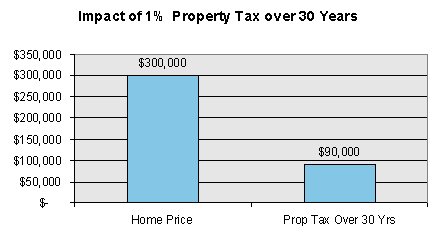|
In theory, the price of a home with a high actual tax rate
(due to the presence of Mello-Roos taxes) should be cheaper
than a home without these additional taxes. This is because
the developer was able to shift the cost of infrastructure
to the property owners through the use of municipal debt.
When this municipal debt financing is used, the property owner
repays the cost of the infrastructure over time, with interest,
on the property tax bill. Therefore, the house should be priced
less than a home where the developer used traditional financing
to pay for the infrastructure. Due to a lack of available
information, however, prices of these properties are not always
adjusted accordingly. Most homebuyers are not aware of this
distinction and do not take it into consideration when making
a purchase decision. This can be an extremely expensive mistake.
In California and other states where there are new communities,
actual property tax rates can vary in neighborhoods dramatically.
A new development may have actual tax rates of 2% or more,
where an older development adjacent to it may be subject to
only a 1% actual rate.
The following example illustrates the financial impact. If
you have a $300,000 home in a 1% actual tax rate area, then
another home of the same size and style in an area where property
taxes are 2%, the homeowner would end up paying $3,000 per
year more for the second property, and a total of $45,642
more over the course of repaying a 30-year mortgage. This
difference represents the buyer paying about 13.2% more for
a similar house with a higher actual tax rate.


A buyer armed with a detailed property tax disclosure report
would be able to correctly price a home with and without these
added property tax elements. In addition to increased annual
costs of ownership, the property owner also will run the risk
of having an asset that is difficult to sell, or one that
will sell for a discounted price when it is put on the market
in the future.
This common situation creates potential liability for title
companies, mortgage insurers and real estate brokerage firms,
as well as creating direct financial impacts on homeowners
and their lenders. A disclosure of all benefit assessment
financings that the property is subject to would eliminate
this problem for all parties involved.
|

